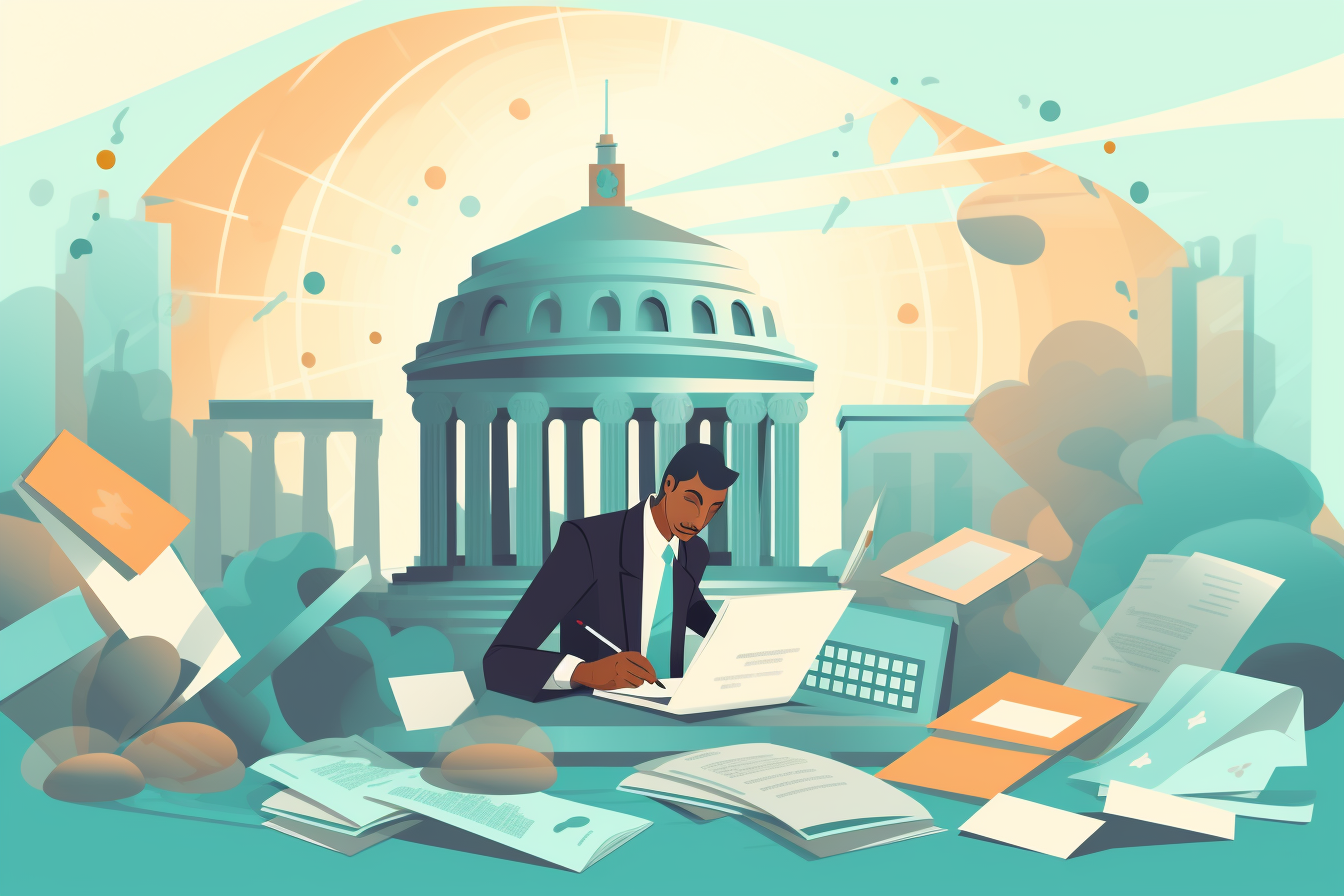Student loans are a standard way to pay for school. And while these loans may be common, they can also add up quickly. In 2023, borrowers had an average student loan debt balance of $37,338 (for federal loans) and $54,921 (for private loans). Coming out of school and starting an entry-level job is challenging enough, but it’s especially hard when you also have to handle five-figure student loan repayment! So, it should be no surprise that the average borrower takes over 20 years to repay their student loan.
But you shouldn’t give up a portion of your paycheck to debt for the next 20 years of your life. Luckily, if you make the right steps starting today, your debt will be paid off much faster. Let’s look at some easy tips you can follow to get rid of those overwhelming student loans.
Six Tips for Paying Off Student Loan Debt
Here are six simple tips that will help you get rid of those student loans quickly:
1. Pay More Than the Minimum
Usually, lenders give students an extended time frame to pay off their debt. Most federal and private loan repayment terms are 10 years. This is helpful for borrowers, as it means their payments are more affordable.
But you don’t need to just accept this monthly payment for what it is.
If you hope to pay your student loan debt off early, you’ll need to make additional payments. Aim to put extra money onto your loan every month to get your loan’s balance down quickly.
Before you start making additional payments, make sure to get a few clarifications with your lender:
- Ensure they won’t charge you fees or penalties for making additional payments.
- Find out if additional payments automatically get applied to the principal balance of your loan. This is what makes additional payments so powerful – 100% of your “extra” payment goes to the principal, not interest. However, some lenders have a policy to “hold” onto extra payments and use it for next month’s payment. If this is your lender’s policy, you’ll have to call in to make additional payments and request that it be applied immediately to the loan’s principal.
2. Set a Budget
To pay down debt, you must understand where your money goes. Building a budget will help you identify the following:
- How much extra you can put towards your student loans
- How quickly you’ll pay off your debt
- Where you should cut down costs
There are many free budget templates you can use online. Set aside some time to look over past expenses, build a budget, and plan how you’ll pay off your debt.
3. Get a Side Hustle
The average grad out of college makes $56,000 annually. On a salary like that, finding the room to make extra payments on your student loan debt can be tough. A side hustle can be a great way to increase your income and use that extra money to pay down debt.
Some ideas for side hustles are:
- Driving for ride-sharing services or food-delivery services, like Uber, Lyft, DoorDash, and Instacart, on weekends and evenings
- Picking up a weekend job at a cafe or retail store
- Offering your professional services as a freelancer
- Dog walking or dog sitting through platforms like Rover
- Babysitting for parents in your neighborhood or apartment building
Ideally, all your money earned from these side hustles should be applied as extra payments to your student loans. However, make sure you set aside money for taxes first (if the job doesn’t do that for you).
4. Consider Refinancing

Refinancing your student loans usually means you take your loan from one lender to another to redefine the loan terms. People typically refinance their student loans to get a better interest rate or to extend their loan term. If you’re looking to pay off your student debt quickly, refinancing for a lower rate can be incredibly powerful. Lowering your interest rate by even as little as half a percent can help save you thousands.
Before you refinance, ensure you fully understand all the consequences of this decision. For example, you can only refinance federal loans by switching to a private borrower. A private borrower may offer you a lower interest rate, but you’ll be giving up certain benefits of having a federal loan (such as eligibility for loan forgiveness programs).
Refinancing can be an excellent option, but you should always evaluate the money you’ll save versus the benefits you’ll give up.
5. Apply for Loan Forgiveness
One of the most critical steps to take in repaying your student loan debt is to understand if you can have any of it forgiven! If your student loans are federal, there are multiple loan forgiveness programs you may qualify for:
- Public Service Loan Forgiveness: The Public Service Loan Forgiveness (PSLF) program will forgive the remaining balance of your loan if:
- You’re employed by a not-for-profit organization or the government
- You’ve made 120 qualifying monthly payments
- You work full-time for an eligible employer
- Teacher Loan Forgiveness: The Teacher Loan Forgiveness (TLF) program offers forgiveness of up to $17,500 of student loans if:
- You’ve taught full-time for five complete, consecutive academic years in an educational service agency or low-income school
- You meet other qualifications
- You have Direct Subsidized and Unsubsidized Loans, and your Subsidized and Unsubsidized Federal Stafford Loans
- Income-Driven Repayment Forgiveness: Under an Income-Driven Repayment Plan, your student loan payments are a percentage of your discretionary income. Every year, your payments get re-evaluated to match your current income and family size. If you still have a balance remaining at the end of your loan term, that balance is forgiven. Eligibility for this program requires the borrower to show financial hardship and inability to make student loan payments.
Do your research into each forgiveness program to understand if you qualify and know when you should apply for forgiveness.
6 Take Advantage of Tax Deductions (And Use Your Tax Refund Wisely)
It can be frustrating paying so much interest on your student loans. The good news is that you can claim up to $2,500 annually of that interest on your taxes as a deduction. This applies to federal and private student loans, although some eligibility requirements exist.
If you can claim this deduction, there’s a good chance you’ll receive a higher tax refund. Make the most of this tax refund by putting it towards your student loan as an extra payment.
A Debt-Free Future is Around the Corner
If you dedicate yourself to following the above tips, you can be free of student loans much faster than you realize. Paying off debt can feel like impossible, but the hardest part is getting started. Once you establish and stick to a plan, you’ll be amazed at how quickly you see real progress. And, once you’re free of student loans, you’ll love being debt-free!
You might also be interested in: How To Start Saving For Your Child’s College Education







